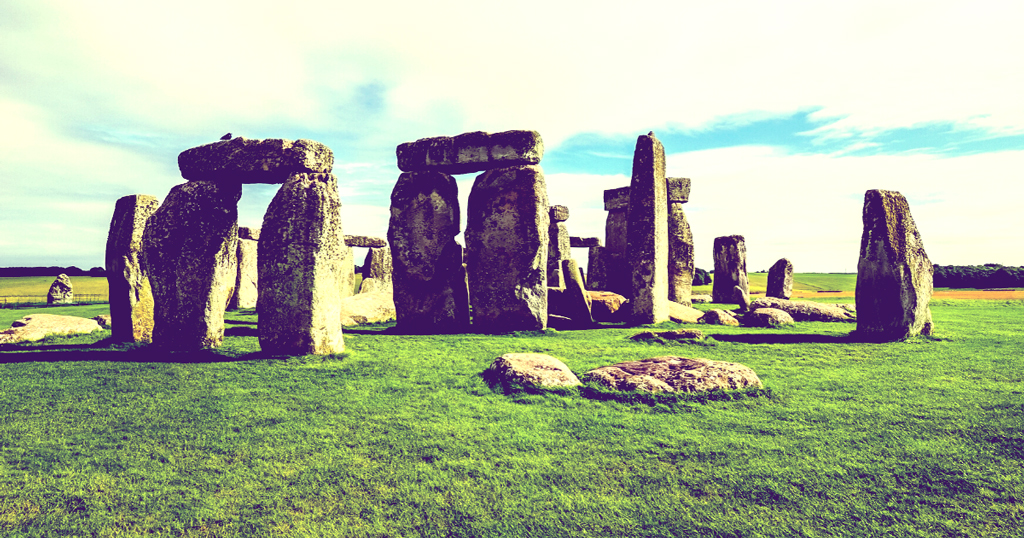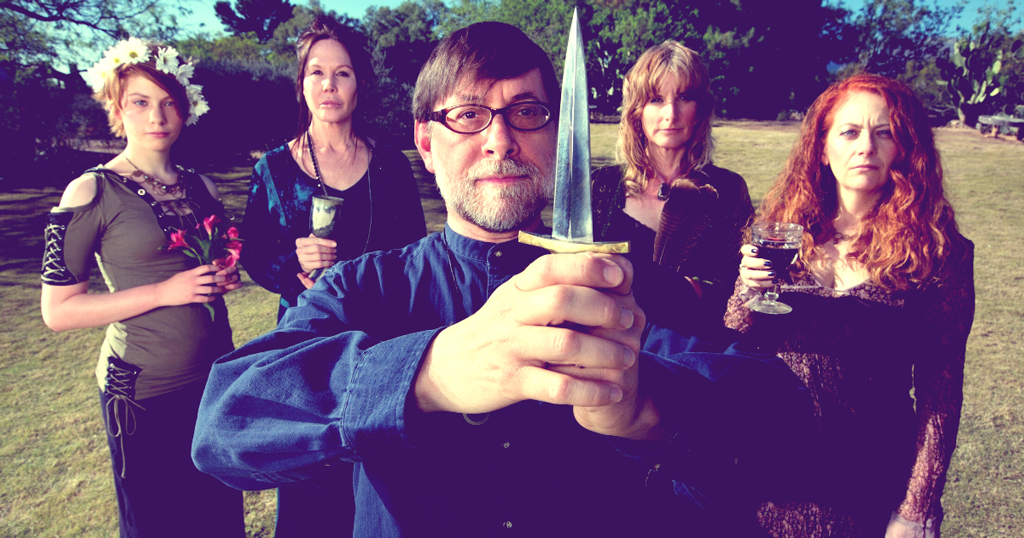What is Traditional Witchcraft: An Introduction

If you’re new to Witchcraft or merely curious about craft practices, you’ll immediately find several craft traditions open for exploration. If you do a bit of comparing with such traditions, you’ll eventually find defining a term like “Traditional Witchcraft” is a thorny process. Like craft practices, the answer seems shrouded in mystery, with the answer changing depending upon the sources you consult. Here’s a breakdown of the different views on Traditional Witchcraft and what it means to be a practitioner of the arcane arts in a traditional sense. By the way, ToSalem posts a lot about witchcraft and related beliefs. Check out a sampling of all of our witchcraft articles below or continue reading to explore traditional Witchcraft in general.
Traditional Witchcraft Vs Wicca: What’s the Difference?
Wicca is a system of belief based on much of the writings by Gerald Brousseau Gardner (craftname of Scire). Gardner was a well-traveled, well-read archaeologist and anthropologist who played a significant role in bringing the practice of Wicca into the public eye. He is considered the Forefather of Witchcraft since he started the Gardnerian movement. Much of his work comes from folklore, his experiences in the Order of Cortona: a Rosicrucian group, and the New Forest Coven, of which he claimed to be an initiate. He also drew his understandings about the magickal arts from his background in Freemasonry, his study of ceremonial magick, and the works of Aleister Crowley.
After the last laws in England against practicing Witchcraft were repealed in the early 1950s, Gardner authored the book “Witchcraft Today.” A second book soon followed, entitled “The Meaning of Witchcraft.” “The Gardnerian Book of Shadows“ is another one of his writings that includes information he draws from his time in the New Forest Coven, and his experiences with Crowley, since Gardner found the initial Book of Shadows sorely lacking in accessible material.
Before delving further into the meaning of Traditional Witchcraft, at this point it’s important to note that a Witch is a practitioner of magic and someone who may or may not practice the magickal arts within a religious framework. A Witch can be Wiccan but doesn’t have to adhere to the principles of Wicca to be a Witch. There are many other traditions outside of Gardnerian Wicca, with some adherents of the latter considering Gardnerian practices as a form of Traditional Witchcraft.
Other Forms of British Traditional Wicca
Gardnerian Wicca is just one form of British Traditional Witchcraft, which describes practices originating in England and the New Forest area. When thinking about traditional witchcraft vs Wicca, it’s important to keep in mind that traditional Wicca is said to have a lineage that’s traceable back to its original British roots. Central Valley Wicca, Blue Star Wicca, Chthonioi Wicca, Algard Wicca, and Alexandrian Wicca are also forms of British Traditional Witchcraft.
Alexander Sanders, often called the “King of Witches,” along with Maxine Sanders, his wife, are the founders of the Alexandrian Tradition of Witchcraft. Sander’s established the tradition in the 1960s in the United Kingdom. His system is based on what he learned from his studies of Gardnerian practices. Alexandrian Witchcraft also mingles the teachings of the Qabalah and ceremonial magick with Gardnerian practices.
Raymond Buckland (craftname Robat) was a practitioner of Gardnerian Wicca and a writer on both the occult and Wicca. He also plays a large role in Wicca’s history after he introduced Wicca to the United States in the early 1960s. He was a high priest in a Gardnerian coven who later created a new tradition, Seax Wica, which focused on Anglo-Saxon pagan practices and symbolism. Some of his writings include Buckland’s “Complete Book of Witchcraft,”“Wicca for One: The Path of Solitary Witchcraft,” and Buckland’s“Book of Gypsy Magic: Travelers’ Stories, Spells & Healings,” among many others.
Opposing Views of Traditional Witchcraft
According to Ethan Doyle White, an archeologist, and established pagan scholar, Traditional Witchcraft embodies any practicing group or individual who does not embrace Gardnerian Wicca. Instead, the group or practitioner has practices stemming from more ancient origins. Under this definition, “Traditional Witchcraft” defines those who adhere to a wide variety of pagan paths, providing the practices and traditions that have roots far older than Wicca.
Michael Howard, a Traditional Witch, suggests that the term “traditional” describes anyone who is not practicing Alexandrian or Gardnerian Witchcraft. Rather, “Traditional” references practices deeply rooted in folk magic, lore, and historical forms of the art. Per such a definition, Traditional Witchcraft references Cochranianism and the Feri Tradition, among others.
Cochranianism is a branch of traditional Witchcraft established in the early 1950s. The founder is Robert Cochrane, who drew his knowledge from family members who taught him the Craft.
Cochrane’s approach is a lot like Gardnerian Wicca but focuses on attaining wisdom. Interestingly, Cochrane also argues Witchcraft has nothing to do with Paganism. Meanwhile, the founders of the Feri Tradition is Victor Henry Anderson and Cora Anderson, who established the tradition in the 1960s: The tradition mingles Gnosticism, Tantric practices, and Hoodoo beliefs Qabalah, Vodou, and Faery lore.
Traditional Witchcraft versus Techno Witches
Tiktok is an app some modern witches use to share video information about witchcraft practices, traditions, and real-world experiences working with the magickal arts. The online community is mostly eclectic, meaning they don’t necessarily focus on a single tradition. Instead, they pull information and beliefs from a variety of magickal traditions and practices. The videos are sixty seconds in length, focusing on offering one another support, healing, and tips. The video method for sharing of information on the arcane arts may seem like the opposite extreme of Traditional Witchcraft. But the practice can indeed be merged into a modernized, syncretic type of practice. Here witches share information about the ancient arts and how to revive the old ways. In doing so, they attempt to work with the most unadulterated forms of the practice as possible.
How to Practice Traditional Wicca
If you’re interested in learning more about Traditional Wiccan practices, consider checking out the work of Thorn Mooney. She’s a priestess in the Raleigh-based, Foxfire Coven that consists of a traditional Gardnerian inner and outer court. Mooney’s background is rich, influenced by extensive academic and religious studies focusing on evangelical Christianity, American religions, and contemporary Paganism. She is the author of “Traditional Wicca: A Seeker’s Guide,” published by Llewellyn Worldwide.

“Dayna Winters is a solitary, eclectic Wiccan practitioner, priestess, an award-winning author, and artist. She earned an Associate in Arts from Hudson Valley Community College, later graduating from Sage College with a Bachelor of Arts in English. Dayna is the former co-founder and co-director of ISIS Paranormal Investigations and ISIS Paranormal Radio. Her publications have appeared in Threads, Crescent Magazine, Blood Moon Rising Magazine, and The Journal for the Academic Study of Magic. Dayna was also featured in “Chat: It’s Fate”; “14 Degrees: A Paranormal Documentary,” and “Discovery Channel’s “A Haunting.” She co-authored “Wicca: What’s the Real Deal? Breaking Through the Misconceptions,” “Sacred Objects, Sacred Space: Everyday Tools for the Modern Day Witch,” and “The Esoteric Dream Book: Mastering the Magickal Symbolism of the Subconscious Mind,” all published by Schiffer Publishing.”




